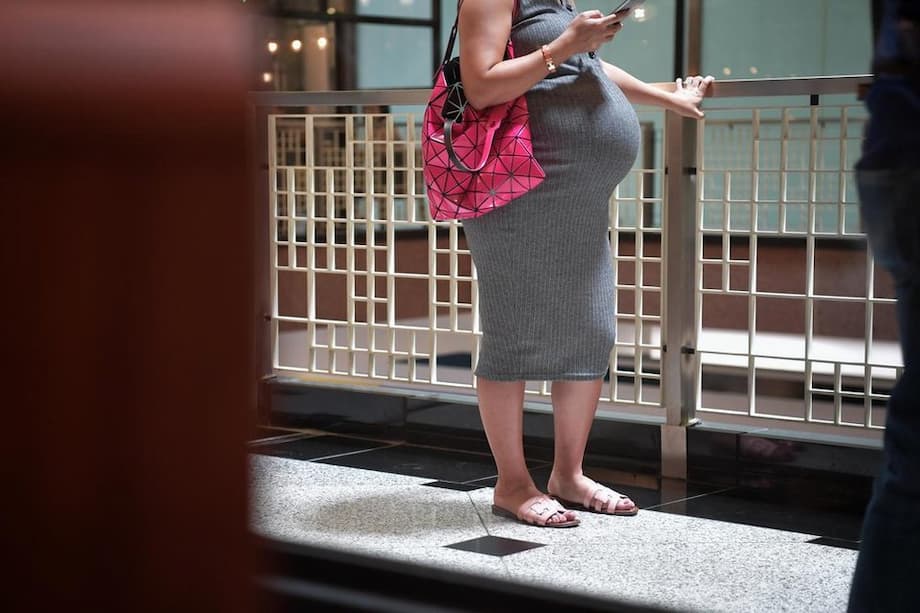Teen Births in Singapore: A Surprising Uptick in 2024
For nearly two decades, Singapore has seen a steady decline in the number of babies born to teenagers. This trend, widely attributed to improved sexual education, greater access to contraception, and shifting societal norms, seemed set in stone. Yet, the latest figures from the Immigration and Checkpoints Authority’s 2024 Report on Registration of Births and Deaths reveal a reversal: 244 babies were born to mothers aged 19 or younger in 2024, up 7 percent from 228 in 2023 and 218 in 2022. While these numbers are far below the 853 teen births recorded in 2005, the recent rise has sparked concern and debate among policymakers, educators, and social workers.
- Teen Births in Singapore: A Surprising Uptick in 2024
- Why Are Teen Births Rising Again?
- Singapore in Global Context: How Do Teen Birth Rates Compare?
- The Realities Facing Teen Mothers in Singapore
- What Drives Teen Pregnancy? Causes and Contributing Factors
- Health Risks and Long-Term Impacts
- Policy Responses and the Road Ahead
- In Summary
Sarah’s Story: The Human Face of Teen Pregnancy
Sarah, who became a mother at 15, embodies the complex realities behind these statistics. Despite her mother’s objections and her former partner’s indifference, Sarah chose to keep her baby after seeing the ultrasound, feeling a deep connection and a sense of responsibility. Now 16, she juggles motherhood with the support of her grand-aunt and social service organizations like Safe Place, which provide counseling and baby necessities. Sarah’s experience is not unique—many teen mothers in Singapore face judgment, isolation, and uncertainty, but also find moments of joy and fulfillment in raising their children.
Why Are Teen Births Rising Again?
The uptick in teen births comes after years of progress. According to World Bank data, Singapore’s adolescent fertility rate has remained low and stable—about 2 births per 1,000 girls aged 15-19 in 2023. The recent increase, though modest, is significant given the long-term downward trend.
Experts and social workers point to several possible factors:
- Pandemic Isolation: The Covid-19 pandemic disrupted routines and support systems, leaving some teens feeling isolated and more likely to engage in unprotected sex.
- Contraceptive Gaps: Despite widespread awareness, not all teens use contraception consistently. Some seek help only in late pregnancy, making abortion no longer an option.
- Changing Attitudes: Social media and evolving norms may be influencing sexual behavior, with some teens becoming sexually active at younger ages.
- Abortion Trends: There are indications that fewer teens are opting for abortion, possibly due to religious beliefs, attachment to the pregnancy, or lack of access to timely services.
Melisa Wong, executive director at Babes Pregnancy Crisis Support, notes,
“We are seeing more teens who feel isolated and unsupported, especially during the pandemic, leading to riskier behaviors and less use of contraception.”
Singapore in Global Context: How Do Teen Birth Rates Compare?
Globally, teenage pregnancy rates vary dramatically. According to Market.us Media and UNICEF, sub-Saharan Africa has the highest rates, with over 90 births per 1,000 girls aged 15-19, while countries like Switzerland and Japan report rates below 3 per 1,000. In the United States, the rate has plummeted from over 60 per 1,000 in the early 1990s to just 13.6 in 2022. Singapore’s rate, at about 2 per 1,000, remains among the lowest in the world.
Yet, the recent rise in Singapore stands out because it bucks the trend seen in most developed countries, where teen pregnancies continue to fall. For example, in England and Wales, the conception rate among teenagers dropped from 60 per 1,000 in 2008 to 26.1 per 1,000 in 2021, with a growing proportion of these pregnancies ending in abortion rather than live birth.
Why Have Teen Births Declined Elsewhere?
International research highlights several drivers behind falling teen birth rates:
- Comprehensive Sex Education: Countries with robust, evidence-based sex education see lower rates of teen pregnancy.
- Access to Contraception: Easy, affordable access to contraceptives is critical.
- Changing Social Norms: Delaying marriage and childbearing for education and career is increasingly common.
- Supportive Policies: Family planning services, youth-friendly clinics, and community outreach all play a role.
Singapore has made significant strides in these areas, but the recent uptick suggests that gaps remain—particularly for vulnerable teens who may fall through the cracks.
The Realities Facing Teen Mothers in Singapore
Teen pregnancy is not just a health issue—it’s a social and economic challenge with lifelong implications. Teen mothers are more likely to drop out of school, face economic hardship, and experience social stigma. Their children are at higher risk for low birth weight, developmental delays, and poorer educational outcomes.
In Singapore, support organizations like Babes and Safe Place report seeing pregnant teens as young as 12, though most are between 16 and 18. Many choose to keep their babies due to religious beliefs, family support, or emotional attachment. However, social workers warn that most are unprepared for the demands of parenthood. Fear, helplessness, and social judgment are common, and many teens lack stable support from partners or families.
Sarah’s story illustrates both the challenges and the resilience of young mothers. After breaking up with her partner, she moved in with her grand-aunt, who supports her decision and helps with childcare. Despite facing judgment from friends and relatives, Sarah finds happiness in caring for her baby, with help from Safe Place’s counseling and material support.
Babies Without Fathers: A Growing Trend
Another notable statistic from the 2024 report: 330 babies were registered without their father’s name, a number that has remained stable. One in four of these babies was born to a teen mother. Reasons for omitting the father’s name vary—some fathers do not want to be involved, some mothers fear custody battles, and others want to move on from a painful chapter. This trend is not limited to teens; women in their 20s also make up a significant share of mothers registering babies without the father’s name.
What Drives Teen Pregnancy? Causes and Contributing Factors
Academic research, including a 2024 study published on ResearchGate, identifies several key factors contributing to teen pregnancy:
- Inadequate Sexual Education: Teens who lack comprehensive, age-appropriate sex education are more likely to engage in risky behaviors.
- Socioeconomic Disparities: Lower-income families and communities see higher rates of teen pregnancy, often due to limited access to healthcare and education.
- Peer Influence and Family Dynamics: Peer pressure, lack of parental involvement, and unstable family environments increase risk.
- Digital Media: Social media and online content can normalize early sexual activity and shape attitudes toward relationships and contraception.
In Singapore, counselors and social workers echo these findings. While most teens are aware of contraception, not all use it consistently. Some are afraid to seek help due to fear of parental reaction or social stigma. Others lack the resources or knowledge to access reproductive health services.
Prevention and Support: What Works?
Effective prevention strategies include:
- Comprehensive Sex Education: Evidence shows that programs covering contraception, relationships, and consent are more effective than abstinence-only approaches.
- Access to Contraceptives: Making contraception affordable and accessible reduces unplanned pregnancies.
- Community-Based Interventions: Peer support, counseling, and outreach programs help at-risk teens make informed choices.
- Family Engagement: Open communication between parents and teens about relationships and sex is crucial.
- Leveraging Technology: Mobile health apps and digital platforms can provide confidential information and support.
Singapore’s experience mirrors global best practices, but experts say more can be done—especially to reach the most vulnerable teens and address new challenges posed by digital media and changing family structures.
Health Risks and Long-Term Impacts
Teen pregnancy carries significant health risks for both mother and child. Younger mothers face higher rates of complications such as preterm birth, low birth weight, and, in some cases, gestational diabetes. A recent Singapore-based study found that early monitoring of blood sugar in pregnancy can help identify women at risk for gestational diabetes, underscoring the need for early and comprehensive prenatal care.
Globally, maternal conditions are among the top causes of death and disability among girls aged 15-19. Early childbearing can disrupt education, limit future employment opportunities, and perpetuate cycles of poverty and disadvantage. Children born to teen mothers are more likely to face developmental challenges and struggle academically.
Social Stigma and Support Systems
Social stigma remains a major barrier for teen mothers in Singapore. Many face judgment from peers, relatives, and even healthcare providers. This can lead to isolation, mental health challenges, and reluctance to seek help. Support organizations play a vital role in providing counseling, material assistance, and a sense of community for young mothers.
Despite these challenges, some young mothers, like those profiled in The Straits Times’ “Gen Z Mumz” feature, find fulfillment and meaning in early parenthood. They often rely on family support and online communities to navigate the demands of motherhood, even as they face social isolation from peers at different life stages.
Policy Responses and the Road Ahead
Singapore’s government and civil society have long invested in reproductive health education and support services. Yet, the recent rise in teen births suggests that more targeted interventions may be needed. Experts recommend:
- Expanding Sex Education: Ensure all students receive comprehensive, evidence-based sexual education that covers contraception, consent, and healthy relationships.
- Improving Access to Services: Make reproductive health services, including contraception and counseling, more accessible and youth-friendly.
- Supporting At-Risk Teens: Identify and support teens who may be isolated, facing family instability, or at risk of dropping out of school.
- Engaging Parents and Communities: Encourage open conversations about sex, relationships, and reproductive health.
- Leveraging Technology: Use digital platforms to provide confidential information and support to teens.
Other countries in the region, such as the Philippines, are grappling with rising teen pregnancy rates and are considering new legislation to strengthen prevention and support. Singapore’s experience offers lessons—both in what has worked and where gaps remain.
In Summary
- Teen births in Singapore rose by 7 percent in 2024, reversing a decades-long decline.
- Factors include pandemic isolation, inconsistent contraceptive use, changing social norms, and possible declines in abortion rates among teens.
- Singapore’s teen birth rate remains among the lowest globally, but the recent uptick is cause for concern.
- Teen pregnancy carries significant health, social, and economic risks for mothers and children.
- Comprehensive sex education, accessible reproductive health services, and strong support systems are key to prevention and positive outcomes.
- Ongoing efforts are needed to address gaps, reduce stigma, and support vulnerable teens as Singapore adapts to changing trends.




